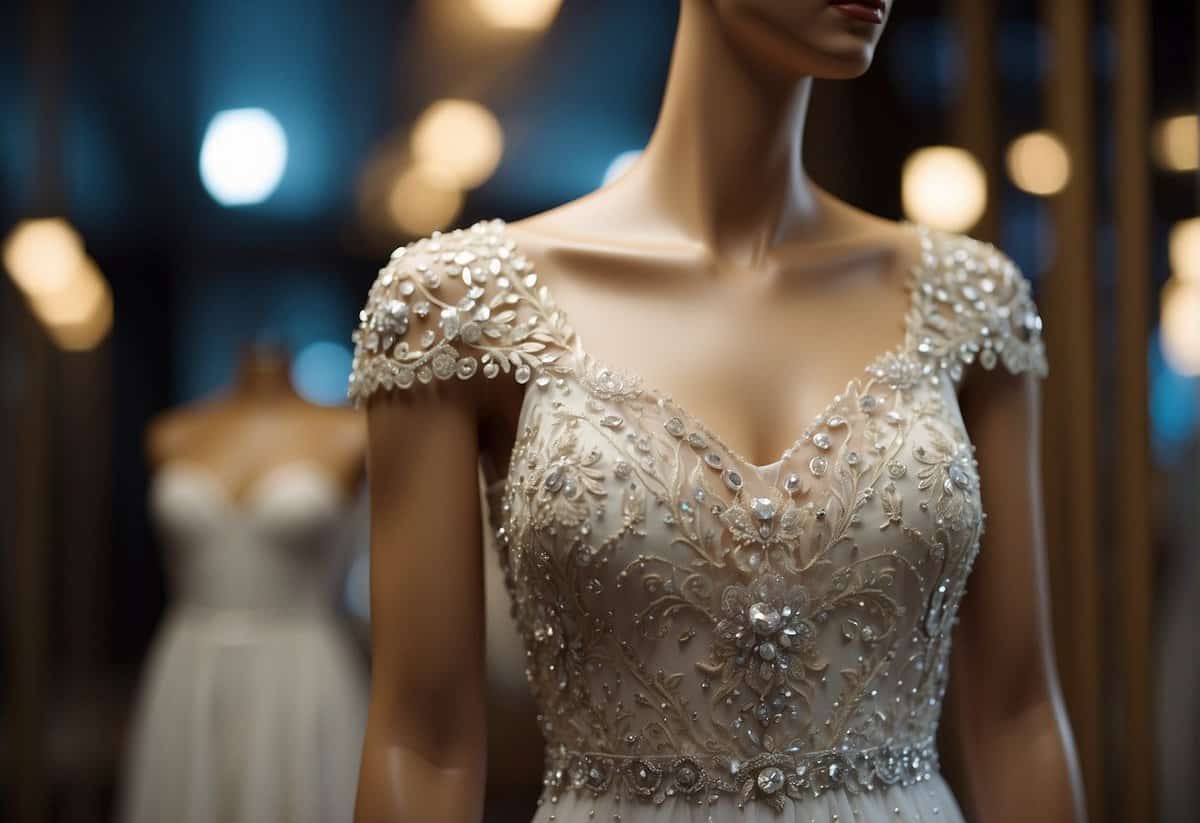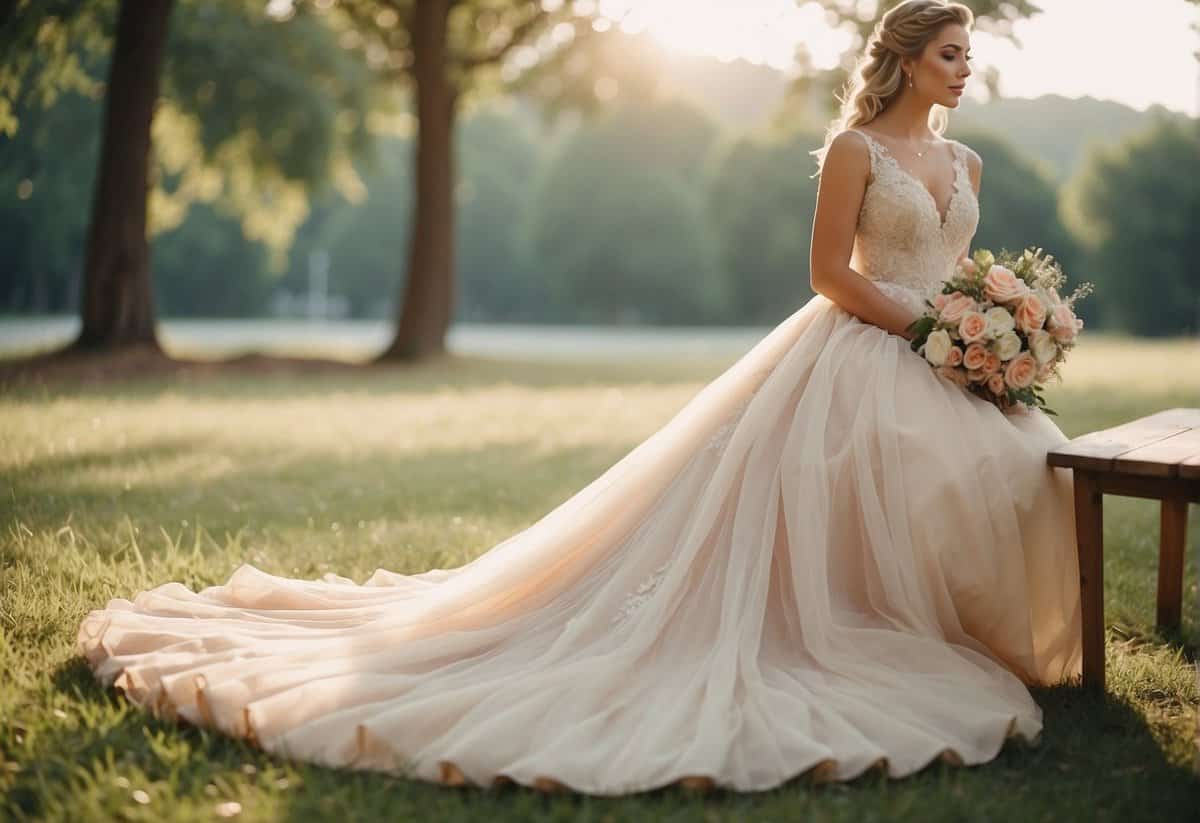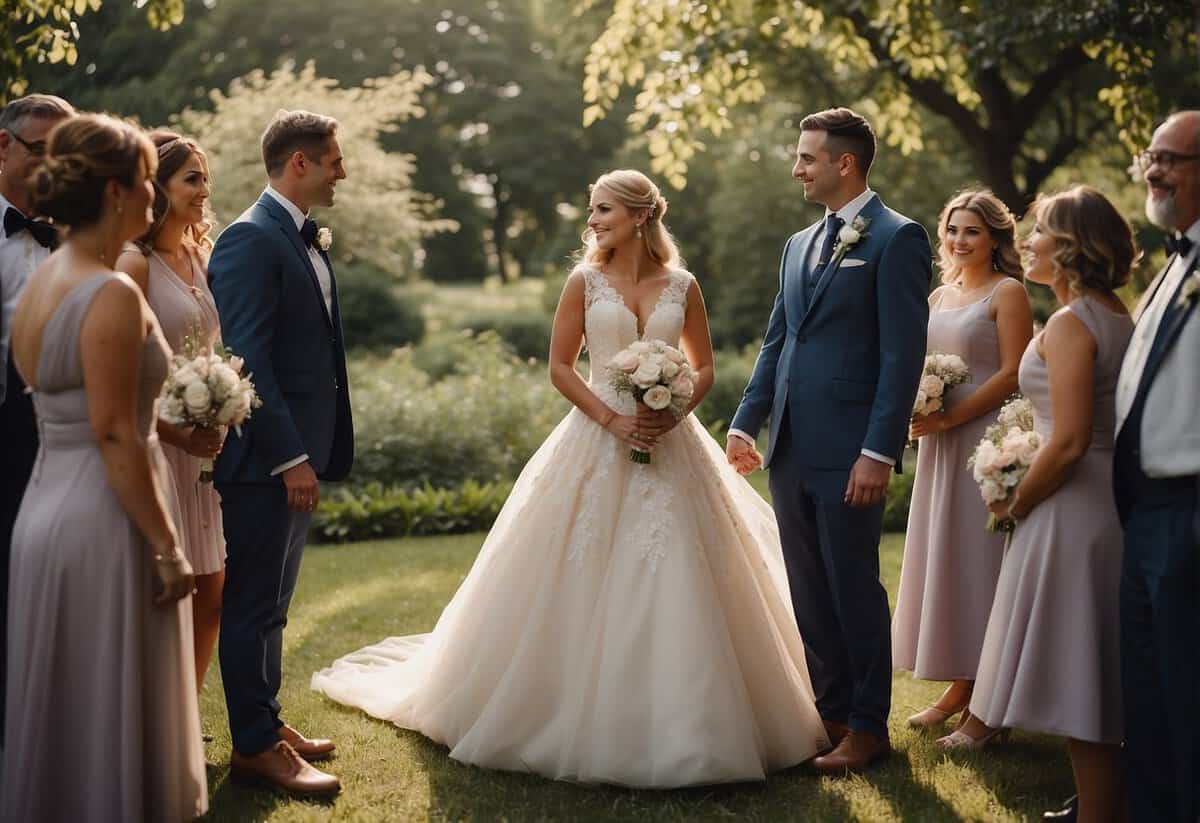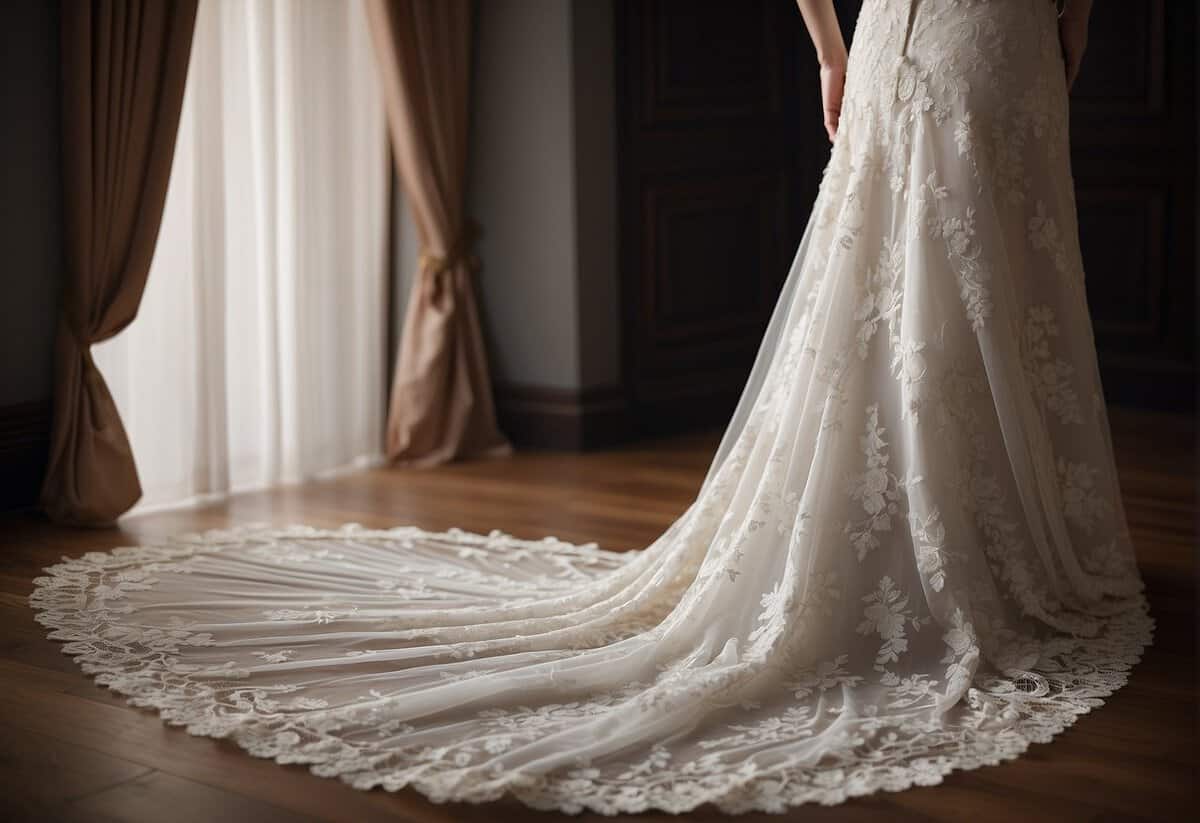What Color Should the Bride’s Dress Be? Deciding on the Perfect Hue for Your Big Day
When planning your wedding, one of the most significant choices you’ll make is the color of your bridal dress. Traditional white gowns have long been the default, symbolizing purity and elegance, but modern brides are not limited to this single hue. There’s a whole palette of colors to choose from, and each can set a different tone for your wedding day. White may be the go-to, but ivory, cream, and even bold colors can offer a contemporary twist that reflects your personality and style.

The color of your dress can also be influenced by the venue and season. A sunlit beach wedding might call for a lighter material and hue, while a winter celebration could see richer, deeper colors take center stage. Moreover, coordinating with the wedding party ensures visual harmony; choosing a dress that complements the color scheme will enhance the overall aesthetic of your special day. As you search for the perfect dress, consider how different shades might photograph and whether they resonate with the wedding’s mood and style.
Key Takeaways
- Explore beyond traditional white to find a bridal dress color that reflects your personality.
- Consider the season and venue when choosing your dress color for a harmonious look.
- Ensure your dress complements the wedding party’s attire for cohesive wedding visuals.
Historical and Cultural Significance of Bridal Dress Colors

The colors you choose for your bridal dress can carry significant historical and cultural meanings, with certain hues evoking long-standing traditions or contemporary expressions of personal style.
Tradition of White and Its Variations
The tradition of white wedding dresses is relatively recent, solidified by Queen Victoria’s choice for her wedding in 1840. White typically represents purity and innocence and is deeply ingrained in Western wedding culture. Over time, variations like ivory have emerged as a popular alternative, providing a softer hue that still upholds the traditional values associated with bridal wear. The influence of white wedding gowns has even extended to include myths, such as an ancient Chinese reference that symbolizes a happy marriage.
Incorporating Color in Bridal Attire
While white and its tones remain dominant, incorporating color into bridal attire has historical roots and significant cultural importance. In many cultures, vibrant colors such as red and burgundy are traditional, symbolizing luck, prosperity, and love. Today’s brides often use colored accents to express personality or honor heritage, with pastels offering a subtle nod or bold shades making a statement. The evolution of bridal fashion signifies a move towards self-expression, where your dress color can reflect your individuality or convey a particular cultural significance.
Choosing the Right Color for the Venue and Season

Selecting the ideal color for your bridal dress not only reflects your personal style but also complements the season and venue of your wedding. It’s important to synchronize your dress color with these elements to ensure a harmonious and visually pleasing celebration.
Seasonal Considerations for Dress Color
Winter: A winter wedding often calls for rich, deep colors. Consider icy silvers or snowy whites to mirror the sparkle of frost and snow.
Spring: Spring is a time of renewal, so think of fresh, soft colors like blush pinks or delicate greens that reflect blooming flowers and new leaves.
Summer: For summer weddings, embrace vibrant colors. You might opt for sunny yellows, ocean blues if you’re considering a beach wedding, or even bold fuchsias to reflect summer’s energy.
Fall: Fall’s changing foliage offers a palette of warm golds, rich reds, and burnt oranges, which can lend a cozy and earthy feel to your dress color.
Venue Influence on Dress Selection
Indoor Venues: If you’re getting married indoors, look at the existing décor and color scheme. A grand ballroom might pair well with a classic cream or champagne gown.
Outdoor Venues: Outdoor settings can offer a natural color scheme. For a garden venue, a dress that features floral embellishments in soft, pastel hues can be enchanting.
Beach Weddings: Beach settings are casual and airy. Light, breezy dress colors like seafoam green or sky blue can match the tranquil surroundings and relaxed vibe.
Always keep in mind the interplay between your dress color and the overall tone of your wedding planning to create a cohesive look.
Coordinating With the Wedding Party

When selecting your bridal gown, it’s essential to consider how it will coordinate with your wedding party’s attire to ensure a cohesive look for your special day.
Matching With the Bridesmaids and Groomsmen
Your bridesmaids and groomsmen are crucial visual elements of your wedding. To achieve harmony, match your gown to the bridal party’s color scheme. For example, if you choose emerald green for your bridesmaids’ dresses, consider incorporating green elements, like a sash or embroidery, into your gown. The groomsmen’s accessories—a tie, pocket square, or boutonniere—can also match the bride’s accents and the bridesmaids’ dresses to tie everything together seamlessly.
Complementing the Mothers’ Attire
The mother of the bride and mother of the groom typically choose dresses that compliment the wedding palette, while not directly matching the bridesmaids. If your bridesmaids wear lavender, the mothers might select shades of plum or lilac. Their attire should be distinguished yet harmonious with the overall aesthetic. For guidance, you can reference how to coordinate the color of your mother of the bride dress with the wedding for a perfect balance.
Guidance on Choosing the Perfect Dress

Finding the perfect wedding dress is all about matching the formality of your event and complementing your unique skin tone. Let’s make sure you shine on your big day by choosing a dress that feels like it was made just for you.
Evaluating Formality and Dress Codes
If you’re attending a black-tie wedding, the expectation is elegance and formality. Your dress should reflect this with a more structured silhouette and possibly a train. But if it’s a semi-formal event, you have the freedom to choose a dress that’s less traditional and perhaps includes a touch of color or shorter hemline. Always ensure your choice aligns with the dress code—it sets the tone for the entire ceremony and your attire is central to this.
- Black-tie: Think classic and timeless. Full-length gowns are your go-to.
- Semi-formal/Cocktail: Feel free to explore shorter lengths and less structured silhouettes.
- Casual: Opt for simplicity. A simple yet elegant dress can be perfect.
Selecting a Dress to Flatter Skin Tone
Your dress color should make your skin glow. While white is traditional, there are many shades that can be more appropriate and flattering. For example, ivory can look amazing on nearly every skin tone, providing an elegant warmth. If you have cool undertones, look for dresses with a slight blue or pink hue. Warmer skin tones excel with creamier colors.
To highlight your features:
- Cool undertones: Ivory, pure white, or silvery shades.
- Warm undertones: Cream, off-white, or romantic peach.
It’s also worth noting that your dress color can affect how your hair and makeup appear, so choose a shade that harmonizes with your entire bridal look.
Frequently Asked Questions

When it comes to selecting your wedding dress, color plays a significant role in defining the theme and aesthetic of your big day. Let’s explore some common questions around wedding dress colors and their meanings.
What are some traditional wedding dress colors?
Traditionally, wedding dresses are often white, symbolizing purity and innocence. White encompasses a broad spectrum, including shades like snow, eggshell, and cream.
Can the wedding dress be a color other than white?
Absolutely, you can choose a wedding dress in any color that resonates with your style and wedding theme. Colors like blush, soft blue, and lavender are becoming increasingly popular.
What do different wedding dress colors signify?
Wedding dress colors can hold various significances: red often represents love and passion, blue symbolizes stability and tranquility, and pink conveys romance and charm.
Are champagne and ivory dresses acceptable for brides?
Champagne and ivory dresses are not only acceptable but also elegant choices. These shades offer a warm alternative to traditional white, complementing an array of skin tones.
What should the mother of the bride wear to the wedding?
The mother of the bride should choose a dress in a color that complements but does not match the wedding party. Neutral colors like grey, taupe, or dusky hues are recommended, aside from white, ivory, or champagne to avoid matching the bride. For more tips on picking the right color, Zola offers advice.
Which color is appropriate for a bride’s dress at a bridal shower?
Bridal showers are less formal, so feel free to experiment with vibrant or pastel hues. Often, lighter shades or patterns that reflect your personal style are perfect for such joyful occasions.
